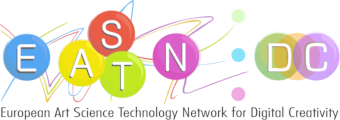We explore novel game mechanics and techniques in the domain of gamified and game-based mobile mental health applications. By combining modern game design elements with techniques applied by practitioners (e.g. therapists) and known mechanics used in relevant games, we developed an integrated mobile game. Playtesting with a group of individuals showed a positive response towards the study’s claims and a promising direction for further research.
Theoretical Framework
It is undeniable that the modern way of living entails a great deal of stress-inducing situations. The video game industry has expanded its interests towards psychology-related applications in recent years. In contrast to arguments against the use of games for purposes other than having fun, new studies have emerged, aiming to prove that casual gaming can act as a stress relief factor. Many practitioners in the field of psychology and psychotherapy have collaborated with programmers and game designers and implemented games and gamified applications for treating certain cases of mental illness. These applications come under the broad term of serious games, which include those specially designed games aiming at tackling deeper issues than providing entertainment (i.e. rehabilitation, learning, etc.).
Psychotherapy is applied using a vast arsenal of techniques and established methods. Most of them have some concepts in common, such as the need to help the patient feel comfortable and safe and facilitate their attempt to get in touch with the source of their stress. This study aims to prove the direct connection between established methods of psychotherapy and the design of relevant applications and games. Practitioners have been interviewed and consulted during the design and implementation processes, to ensure that the end product will meet the necessary requirements.
Game Design
The above concepts have been integrated inside a mobile game, implemented using the Unity game engine. The aim of the player in each level is to guide a ball towards a goal, with or without obstacles hindering their attempts. This unlocks a dialog and the access to the next level. Important therapy steps implemented as scenarios in the game include the process of grounding the patient to the present, the sense of security, the projection of the stressful feeling and the contact with it as well as its acceptance and the process of stripping it from logical causes.
In the first level, the user must guide the ball towards the ground. In general, the ball represents the player’s feelings, something unconsciously prevalent, which still is made known to the player during the game. The idea behind this scenario is to help the player feel grounded at the present. In the second level, the player needs to guide the ball through a relatively easy maze. This helps the user establish a connection with the ball, which is their in-game projection. The third level includes another maze, with moving obstacles, representing logical fallacies and hypothetical thinking which can keep the patient at the beginning of the therapeutic process, without progress. Finally, the fourth level focuses on acceptance. Here the player gets acquainted with the feelings of joy, fear and stress. Between levels, relevant dialogs are shown to the player, aiming to guide him both through the therapeutic process and through each level.
All interfaces follow pastel-like color patterns as the use of light, warm colors with tones of white have been shown to help users relax. Furthermore, circular shapes and curves have been promoted for the interface design as the connection of feelings and preference of users towards shapes without many corners have been studied and verified. This design choice also follows the Eleven Principles of the Gestalt method, in which symmetry, harmony, consistency and simplicity are preferable to the neutral user.
Experimentation and findings
The application was playtested by a group of individuals between 20 and 27 years of age. Before playing, the subjects were asked to sit comfortably and keep their feet on the ground. Users found these preconditions to be important for the effectiveness of the application.
Results showed positive reactions towards the goal of the application. Approximately 40% of the subjects reported a calm feeling after playing and over 67% of the playtesters reported general positive feelings. The focus of each level was apparent to the subjects and those that were not fully immersed, were able to understand its meaning and provide thoughtful comments. This proves that the concepts and the design principles integrated in this application are in the right way and can serve as a viable start for more sophisticated gamified or serious game applications.
Back
“Reflections: Bridges between Technology and Culture, Physical and Virtual”
is supported by:






